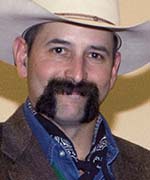Clips are one of the best things you can forge on a horseshoe, once you learn how to properly create and fit them.
I didn’t always feel this way. When I was a beginner, there were many contests where I would make the shoes, file them, place them strategically on top of the forge so they wouldn’t get too cold and ruin them in the last five minutes while attempting to put that little flap on the shoe we call a clip.
My wife, Kelly, of course would always prod me to clip the shoes while I was building them. I was totally lost when it came to this aspect of a horseshoe. In fact, I was scared and disgusted with clips.
Practice Makes Perfect
Many hours at the forge have passed resulting in hundreds of junk shoes that I’ve clipped for practice. Yes, practicing is the key to learning how to properly draw clips.
But making the clip is only part of the picture. We’ll cover fitting clips in the December, 1999, issue of American Farriers Journal.
I didn’t really know how to put a clip on a shoe until I worked in Great Britain with Ivan Bell, FWCF, Sandy Beveridge, FWCF, and Derrick Garderner, AWCF. These gentlemen clip every shoe for every foot they shoe. It’s how they are taught to shoe from the very beginning.
Making the clip and seating it into the hoof wall correctly is as much a part of shoeing the horse as driving the nails. A well-made and well-fit clip will take almost all of the shearing force off of the nails. Once clips are burned into the hoof wall, the nails are only concerned with keeping the shoe in contact with the foot.
Getting Started
To create the clip, first determine which method you want to use.
Figure 1: I prefer a ball-pein type clipping hammer instead of a bob punch, but experiment while you search for the method that fits you best.
There are almost as many ways to draw clips as there are farriers. However, there are common threads and qualities that differentiate between good and bad clips.
Figure 2: The shoe is still the same width, despite having the source material for the clip removed.
Figure 3: On the inside of the clip, the shoe is clean and flat so there will not be any added sole pressure. The clip is not weak and thin from overforging. For American Farrier’s Association certification testing, the examiner would like the clip to be as tall as the base is wide. This should be the same width as the bar stock. This is a good judgeable standard, but it tends to be a little bit too tall, as the clip will get thin from drawing. Following is my preferred method of drawing clips.
Figure 4: Hold the shoe at a 30-degree angle with approximately 1/4-inch of the shoe past the edge of the anvil. Strike the shoe with the ball portion of the ball-pein hammer directly into the edge of the anvil at a 45-degree angle.
Figure 5: Lower the shoe towards the face of the anvil as you continue to hit directly into the corner of the anvil at 45 degrees.
Figure 6: Place the clip on the face of the anvil with the shoe as parallel to the side of the anvil as your tongs will allow. Hit flat with a couple of half-faced hammer blows until you have established the desired width of the base.
Figure 7: Turn your hammer at a slight angle so the edge of the hammer is causing the metal to draw quicker in two directions and grow in length without getting too wide.
Figure 8: You can do the same thing by pulling the clip toward you using the heel of your hammer as a fuller instead of to the side. This should cause several dents in the surface of the clip.
Figure 9: Smooth out the dented outer surface of the clip by tapping it lightly as you pull the shoe away from the anvil. The flat face of the hammer will take care of the dents.
Figure 10: When using a bob punch, pull out the initial source material by driving the punch into the hardie hole. As an option, use the pritchel hole or the edge of your anvil if you can control it well enough to keep the shoe on the anvil.
Figure 11: The source material will not be as clean on the hoof surface of the shoe when you use a bob punch and hardie hole.
Figure 12: Go to the same position as in figure 8 and draw the clip as described.
Figure 13: I use a bob punch when drawing a toe clip on a draft shoe with a striker. Note how we draw the source material out of the shoe using a ball-pein hammer and sledge.
Figure 14: The source material is pulled without the same trouble caused by using a bob punch and hardie hole. Notice how clean the backside of the clip and shoe are.
Figure 15: I use a cross-pein hammer to draw the clip toward me on draft shoes instead of the edge of the hammer as previously described.
Figure 16: It’s important to hit the clip with half-faced blows to establish a good base width prior to pulling with the pein portion of the cross-pein.
Figure 17: The clip will draw really fast when you use a cross-pein hammer.







